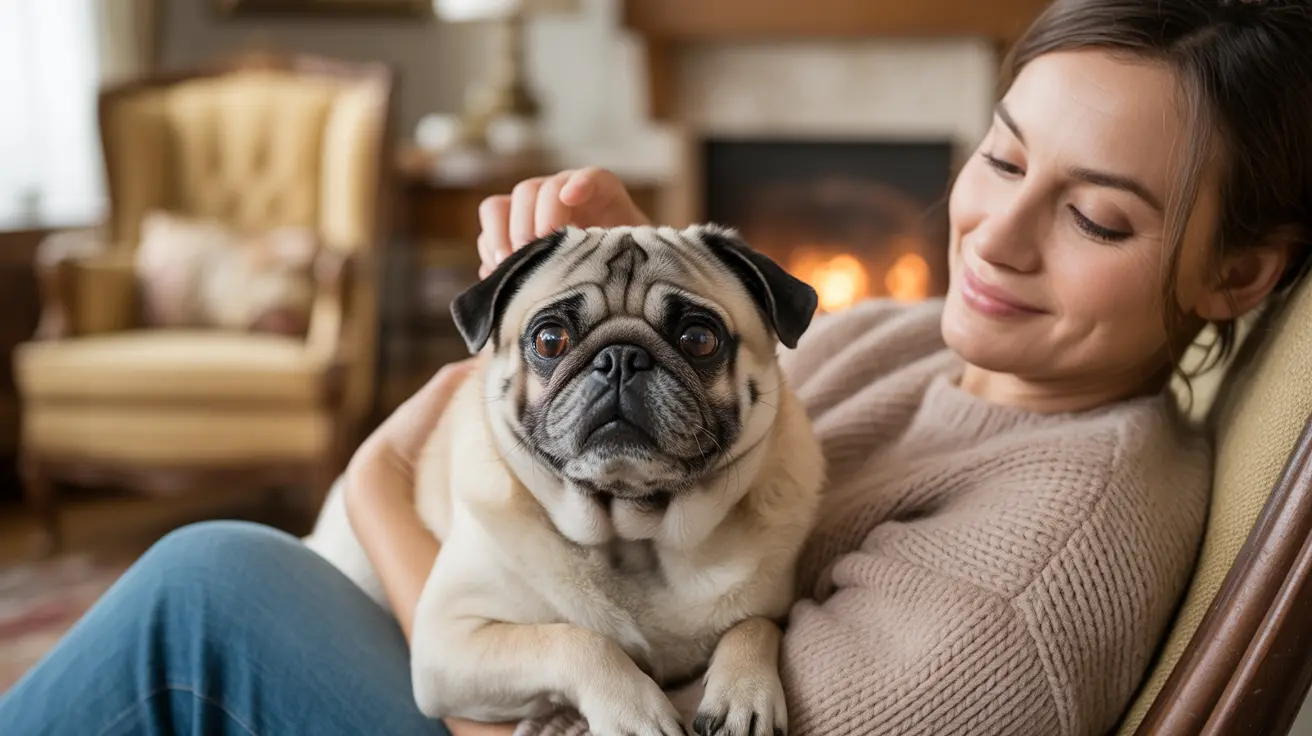From ancient Chinese palaces to modern family homes, Pugs have captured hearts for over 2,000 years. These charming dogs, with their distinctive wrinkled faces and endearing personalities, were specifically bred for one noble purpose: companionship. Unlike many dog breeds developed for hunting, herding, or working, Pugs have maintained their original role as devoted human companions throughout their entire history.
In this comprehensive guide, we'll explore the fascinating origins of Pugs, their historical significance, and how their breeding purpose has shaped the beloved companions we know today.
Ancient Chinese Origins and Royal Connections
Pugs trace their origins to ancient China, with historical records dating back to 400 B.C. These dogs were specifically bred to be companions for Chinese emperors and their families, living lives of luxury within the imperial palace. Their wrinkled faces were intentionally bred to resemble the Chinese character for "prince" (王), making them symbols of royalty and good fortune.
Unlike working breeds of the time, Pugs were pampered pets who received special treatment, including dedicated servants and guards. Their sole purpose was to provide companionship and entertainment to their noble owners.
The Journey from East to West
Dutch traders introduced Pugs to Europe in the 16th century, where they quickly became favorites among European royalty and aristocracy. Their adaptable nature and affectionate temperament made them ideal companions for noble families, including William III and Mary II of England, and Queen Victoria.
This royal patronage further cemented the Pug's status as a prestigious companion breed, leading to their widespread popularity across Europe and eventually worldwide.
Physical Characteristics and Breeding Focus
Throughout their breeding history, Pugs were selectively bred for specific physical traits that enhanced their appeal as companion animals:
- Compact, sturdy build suitable for lap sitting
- Expressive eyes for emotional connection
- Wrinkled face featuring the distinctive "prince" mark
- Short muzzle and flat face
- Curled tail
These features were developed purely for aesthetic and emotional appeal rather than any working purpose, reflecting their dedicated role as companion animals.
Modern Purpose and Family Life
Today's Pugs continue to fulfill their original breeding purpose as devoted family companions. Their gentle temperament, adaptability, and natural affinity for human interaction make them excellent pets for various living situations:
- Apartment living
- Families with children
- Senior companionship
- Emotional support
- Urban environments
While they enjoy moderate exercise and playtime, their primary "job" remains unchanged: providing love, companionship, and entertainment to their human families.
Frequently Asked Questions
What were Pugs originally bred for, and how have they been used throughout history?
Pugs were originally bred exclusively for companionship in ancient China, serving as pampered pets for emperors and nobility. Throughout history, they have maintained this singular purpose as companion animals, never being used for working roles like hunting or herding.
How did Pugs transition from being companions for Chinese emperors to becoming popular pets in Europe?
Dutch traders brought Pugs to Europe in the 16th century. Their charming personalities and royal Chinese heritage made them instantly popular among European aristocracy, leading to their widespread adoption as prestigious pets across the continent.
Are Pugs related to other ancient breeds like the Pekingese or Shih-Tzu, and what are their key differences?
While Pugs share ancient Chinese origins with breeds like the Pekingese and Shih-Tzu, they are distinct in their physical characteristics. Pugs have shorter coats, more pronounced wrinkles, and a uniquely compact body structure compared to their ancient cousins.
What are some common health issues in Pugs due to their physical characteristics, and how can I prevent them?
Due to their flat faces, Pugs can experience breathing difficulties and heat sensitivity. Regular vet check-ups, maintaining a healthy weight, avoiding strenuous exercise in hot weather, and keeping their wrinkles clean can help prevent common health issues.
How much exercise do Pugs need, considering they were never bred for physical work?
While Pugs weren't bred for physical work, they still need moderate daily exercise to maintain good health. A 20-30 minute walk daily, combined with play sessions, is typically sufficient for adult Pugs, though activity should be monitored to prevent overexertion.
Conclusion
The enduring popularity of Pugs is a testament to their successful breeding as companion animals. For over two millennia, they have fulfilled their intended purpose of bringing joy, comfort, and companionship to their human families. Understanding their breeding history helps us appreciate why these charming dogs continue to be beloved pets worldwide.






